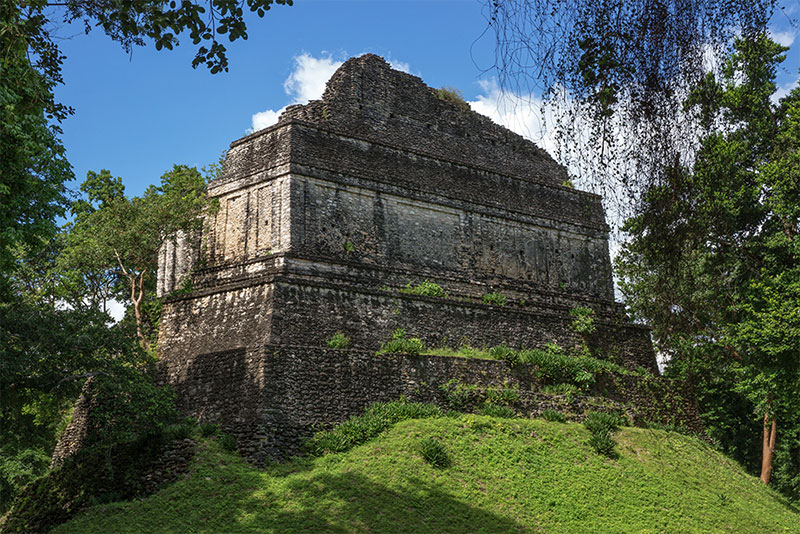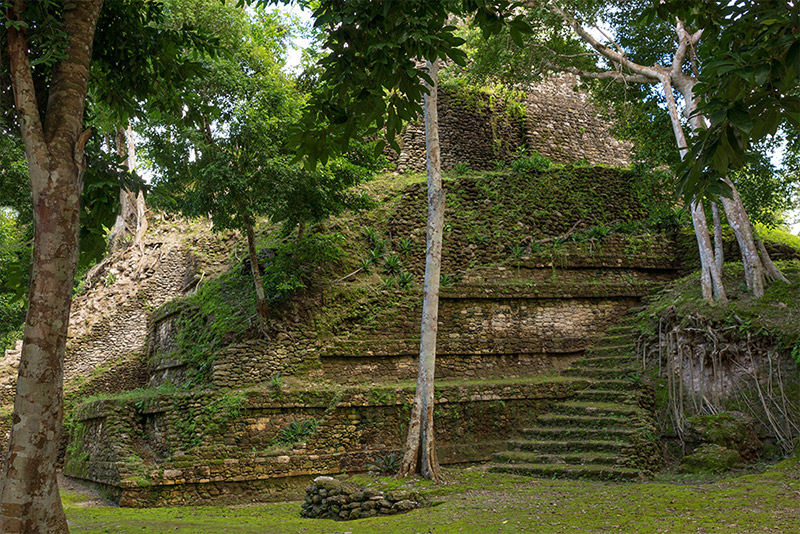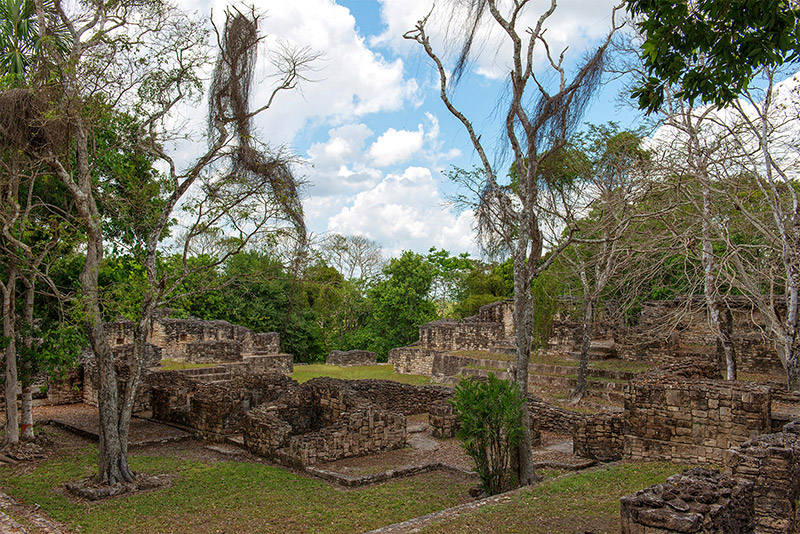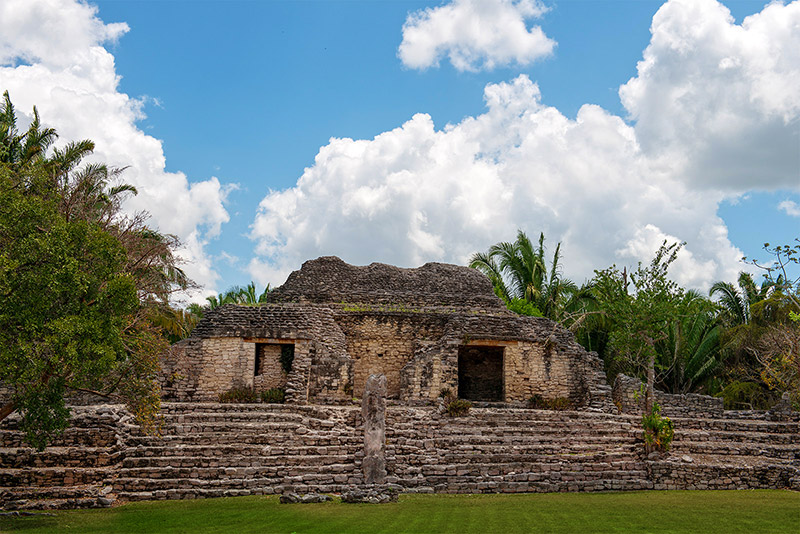Other Maya ruins sites accessible from Costa Maya
Dzibanche Writing on wood


Thriving during the Classic period (300-900 AD), Dzibanche, named for the Mayan words "writing on wood", sprawled across 40 square kilometers of hilly terrain. Residents built their homes and temples across this landscape, while public buildings clustered together, forming the social and economic heart of the city.
Dzibanche's heart lay in its grand architectural complex. Here, vast plazas sprawled, ringed by imposing palaces and towering platforms. Atop these platforms, temples soared towards the sky, testaments to the city's devotion to its gods.
Among these grand plazas, the most notable are those leading to Temples 1 and 2, and the one gracing the foot of the small Acropolis known as the "Unknown Building".
Standing apart from the main complex, a ball court completes the picture of Dzibanche's civic-ceremonial center.
Kinich Na House of the Sun
Towering over the plaza's northern edge, the Acropolis rises in two distinct tiers. Low, elongated mounds flank its base, adding to the sense of grandeur. A grand staircase ascends to the first level, where three enigmatic structures stand adorned with panels. These panels might once have been framed by imposing stuccoed stone masks, hinting at the artistry and symbolism that adorned the city.
Atop this base lies a broad platform, cradling two buildings at its eastern and western extremities.
A central stairway pierces the broad platform, flanked by the remnants of two pairs of stone masks. Only their weathered supports remain, hinting at the once-powerful visages that may have guarded this sacred space.
Kinich Na, another Mayan site, is now considered part of the greater Dzibanche complex and is often included in tours of the Dzibanche Ruins.
Kohunlich Home of the Sun God


Founded around 600 AD, this ancient Mayan city, shrouded in mystery due to its lost original name, was eventually abandoned sometime between 1200 and 1300 AD. Today, it's known as Kohunlich, a name that may have Mayan roots, but literally translates to "Cohune Ridge" in English, reflecting the abundant cohune palm trees that dominate the area.
The architectural style of Kohunlich is a fascinating blend of influences. It incorporates elements from the Rio Bec style, prevalent further south in Campeche, Mexico, and the Peten style, characteristic of northern Guatemala and Belize.
This architectural blend reflects Kohunlich's close ties and the importance it held within the wider Mayan world.
Imagine this city during its prime: a vibrant landscape where all the buildings were adorned with stucco and painted a striking red. Some facades would have been further embellished with intricate stuccoed figures and geometric designs, whispering stories of the city's history and beliefs.
Beyond its impressive architecture, Kohunlich boasted a complex drainage system, diverting rainwater to an artificial reservoir – a testament to the city's advanced planning.
The remaining structures we can visit today served various purposes. These included mainly residential areas, administrative buildings, and of course, religious temples.